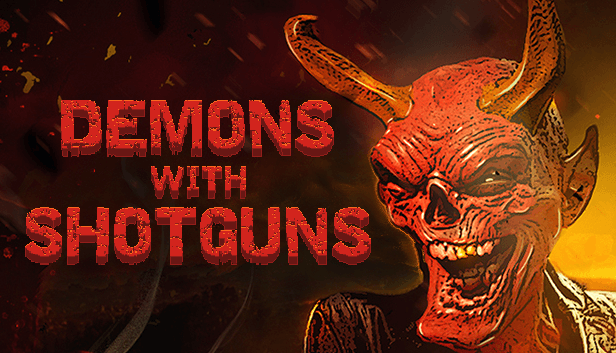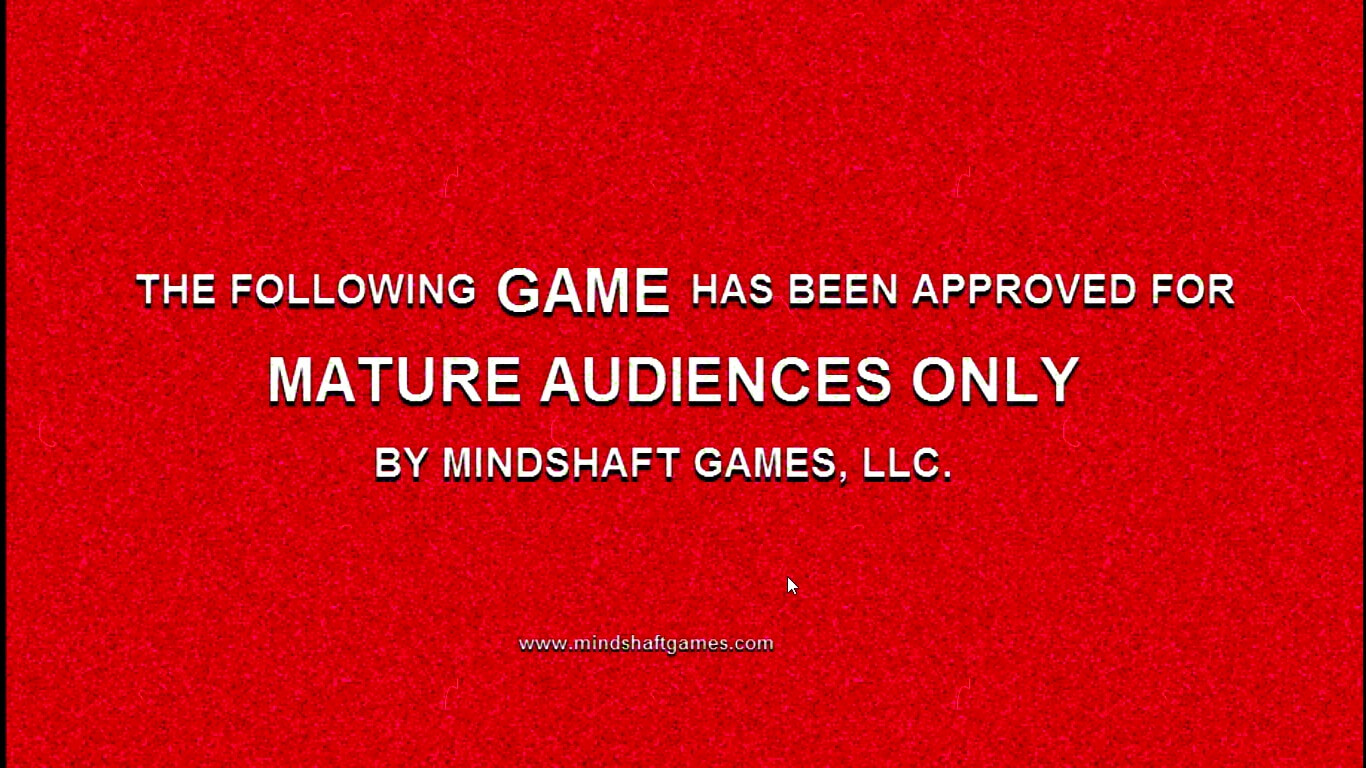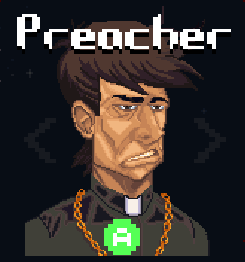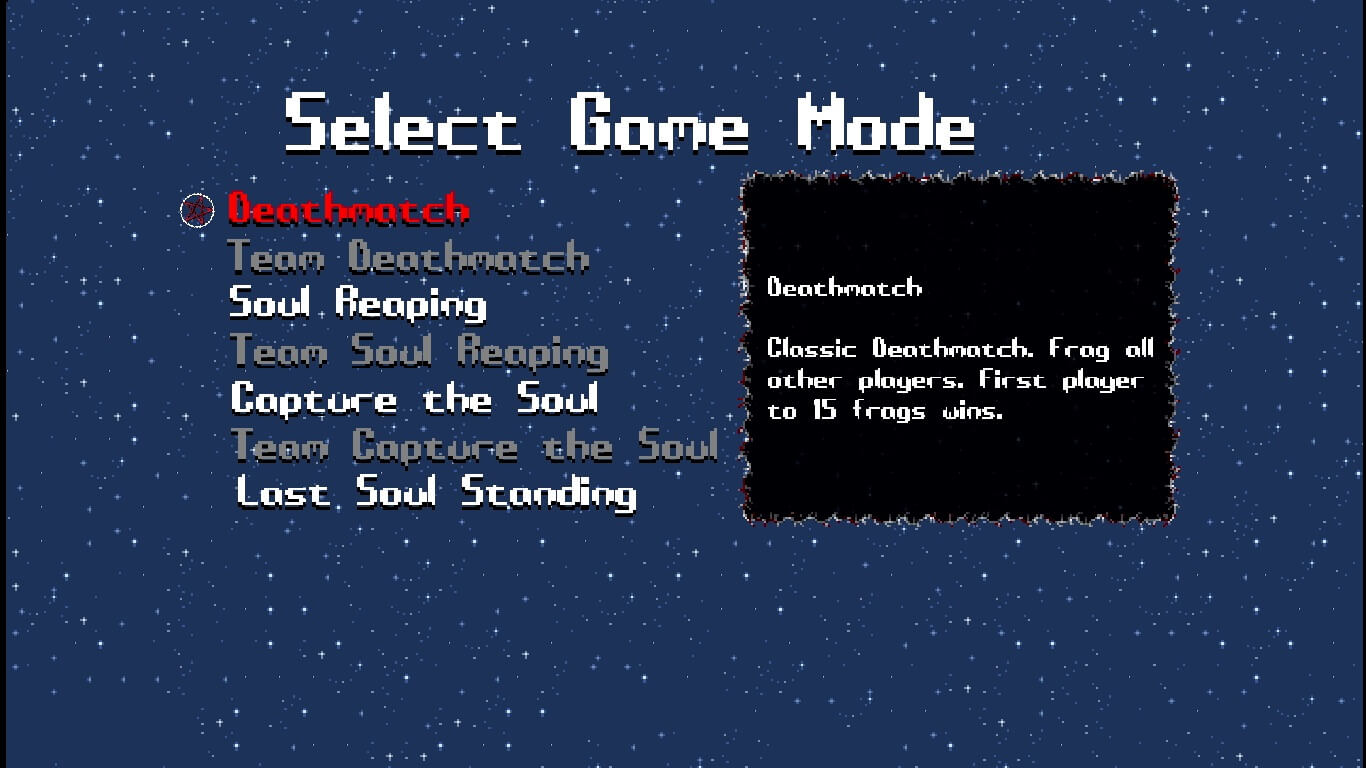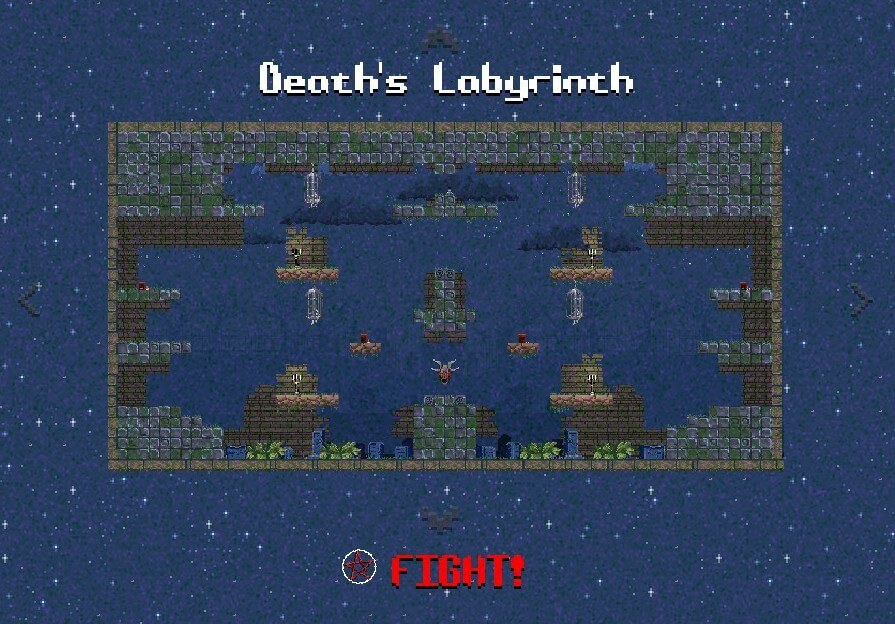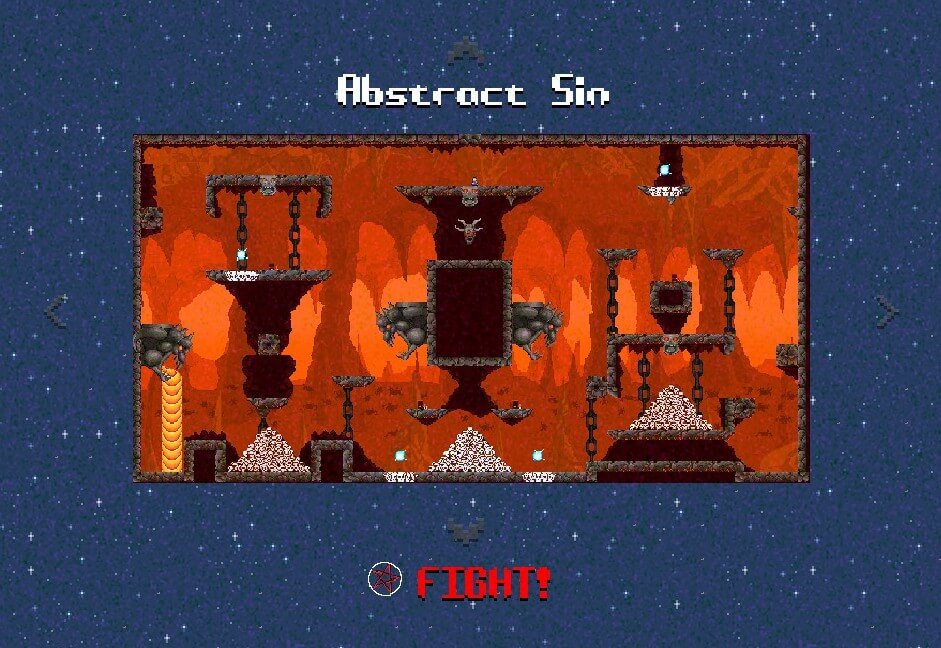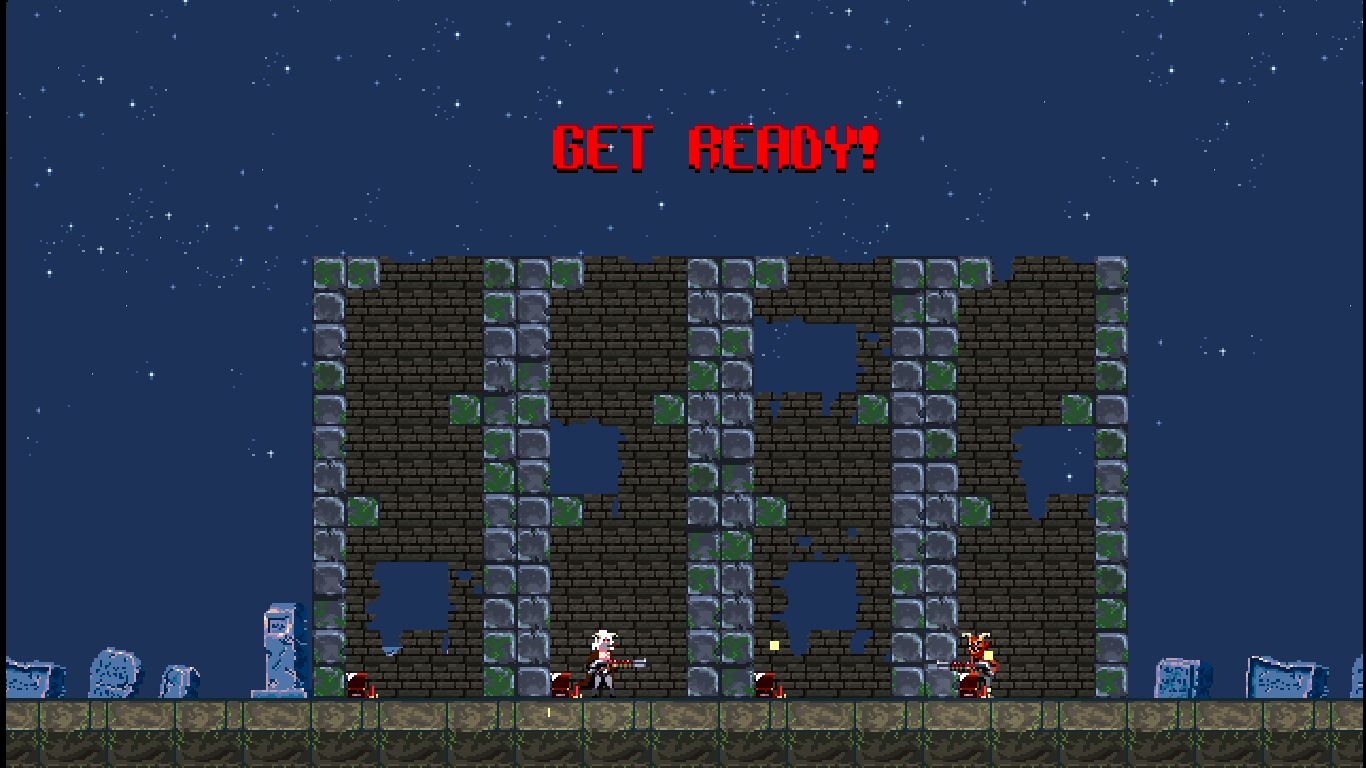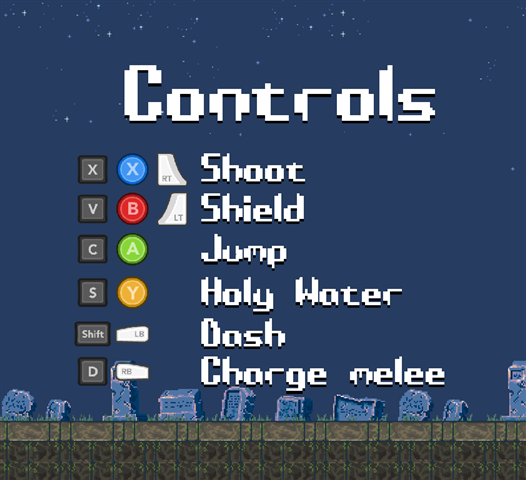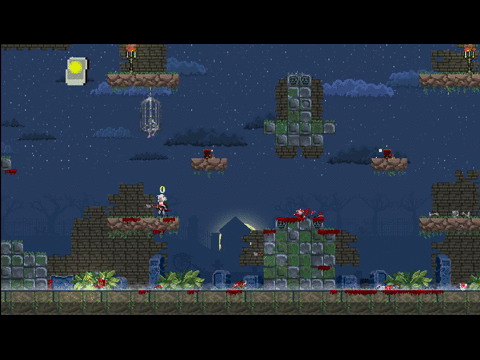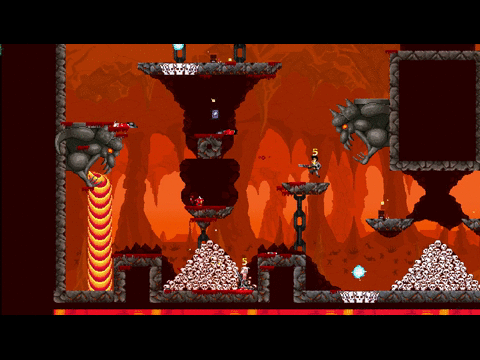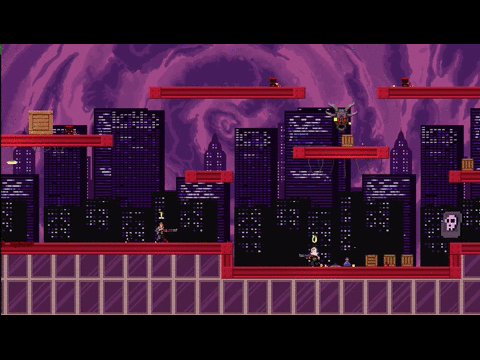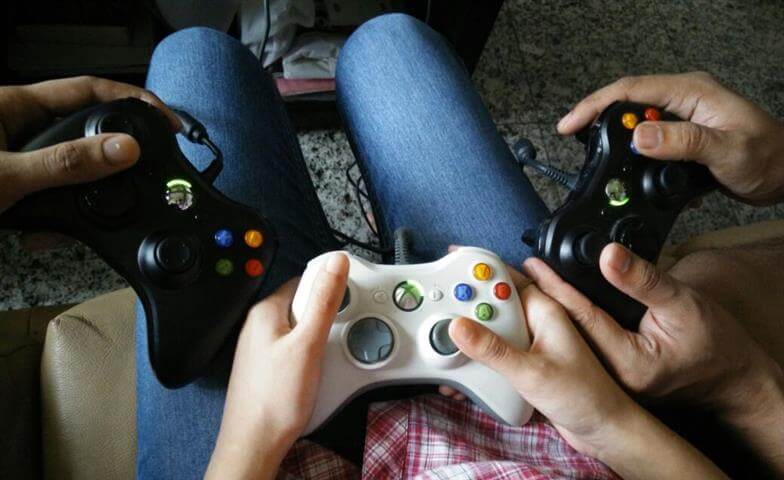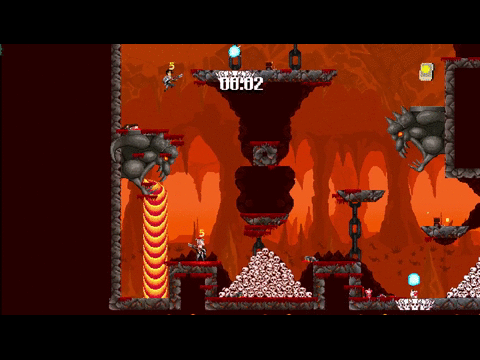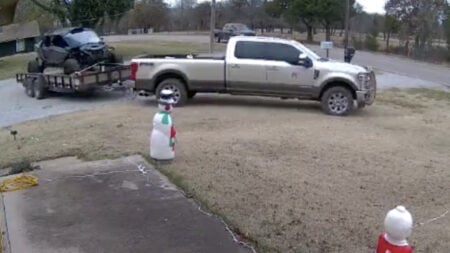Developer: Mindshaft Games, LLC
Publisher: Mindshaft Games, LLC
Release Date: June 25, 2015
Platform: PC
When I first looked up Demons with Shotguns on Steam, I was extremely thrilled to learn that the game included local co-op.
The thought took me back to the early 90s when a group of friends would come over, or we’d go over to theirs, and take turns putting our skills to the test on the SNES. When we weren’t facing off against each other in games like Street Fighter II and TMNT: Tournament Fighters, we had each other’s backs in TMNT: Turtles in Time and Streets of Rage. It didn’t require internet and one SNES was enough for everybody.
But on learning that there was no single-player campaign, I was terribly dismayed. I couldn’t help feeling sceptical about how the game was going to turn out. After all, in this day and age, there’s no guarantee that someone will always be available to play the game with you at your place. Thankfully, my ultimate partner in gaming, who happens to be both my best friend and my better half, was more enthusiastic and open-minded in this regard.
He put his arm around my shoulder and smiled encouragingly, “C’mon, let’s just try it out and see. Maybe it’s much better than we think.”
Besides a name as epic and fascinating as “Demons with Shotguns”, what specifically excited him was the opportunity to play against me while being seated beside me.
Both of us were entranced by this grainy-red screen that appeared when we switched on the game, and it made us wonder what lay in store for us.
One of the things I look for in a game is how it introduces itself, and the game’s menu screen truly captivated us both: The starry sky’s dark hues of blue, the line of worn gravestones, an incandescent moon gradually rising from the center of the screen in the background; two badass-looking pixelated characters – a buff, red demon with horns and an Ash (Evil Dead) look-alike. Hovering above them is the game’s title in large and blood-red decrepit stone. I would’ve posted a screenshot, but that isn’t the way to experience this menu screen.
Usually, I’m the first to point it out whenever I try out a new game, but this time he was ahead of me:
“The music’s really good, isn’t it?”
I turned and found him smiling broadly, his eyes still fixed on the screen. This was a pleasant surprise, because he isn’t usually interested in music reminiscent of the 80s. And the menu music really is good; it seems to be a mix of all my favorite newretro artists – Dance with the Dead, Kavinsky, Power Glove, and more.
“Hold on, don’t do anything yet. Let’s listen to the music for a bit.”
The art of the menu screen together with its eerie adrenaline-pumping music really set the atmosphere for the game we were about to begin.
Upon hitting start, we were taken to the character select screen.
As you can see, the game can take up to four players and a minimum of two. There are five characters in all to choose from:
Demon, Death, Deceiver, Nun and…
The preacher is my personal favorite. His story is that he’s lost his faith and is traveling down a dark road after too many bad events in his life. He’s young and edgy, kind of like of Ash, but when his boomstick is loaded, he’s the epitome of badassery in the arena.
There are currently seven game modes, out of which only four were available to us, since the other three are team-based. They’re accessible when you have more than two players.
We chose Deathmatch and were then taken to the level select screen.
So far, the game consists of four environments:
- Cemetery
- Metro
- Hell
- Church
Each of these have ten different maps, so that’s 40 stages in all! If you can’t decide on a stage or you just want to jump into the game, you can select the “Random” screen, which will decide for you.
Earlier, when the game had a total of four characters, Mindshaft’s blog reported that the plan was to make environments based on each of the four characters. For instance, the cemetery is Death’s environment. It is a long lost Civil War era cemetery, roaming with zombies and with labyrinths filled with booby traps. It remains to be seen whether they’ll add a fifth environment for the fifth character – the blog spoke of a dusty Texas town being one of the possible environments.
The game seems to be full of choices, but these choices are made a lot faster than it reads.
I initially thought this screen was for loading purposes until I found an option in the menu that allowed you to skip this and go straight to the stage. The screen lasts for around 30 seconds. I suspect it’s just an opportunity to experiment with the controls and let you warm up those fingers, because man, does it get intense in the arena.
Announcer: “FRAG EM ALL.”
The announcer, in my opinion, is important to the shoot ‘em up game experience. He prompts the players and sets the tone for the match. In this game, the announcer reminded me a little of the announcer we had in Unreal Tournament 2003, except this one has an otherworldly tone, just like he should.
“FIGHT.”
When they called this a fast-paced 2D platformer, they weren’t kidding. The characters move so swiftly and so smoothly, and the game is designed in such a way as to keep you moving on your “feet”. The adrenaline-pumping soundtrack adds to the urgency of the fight.
As mentioned in the title, your primary weapon is a shotgun that projects its bullets in threes with each shot. Your secondary weapon is explosive holy water (who woulda thought?). It’s blue liquid in a laboratory flask and you sort of pitch it to your enemy. If it finds its target, it blows them up in one go. Damage by the shotgun, on the other hand, depends on your distance from your opponent and his health. If you’re close enough, all it takes is one shot to blow him to bits. If you’re a little far away, it’ll take multiple shots.
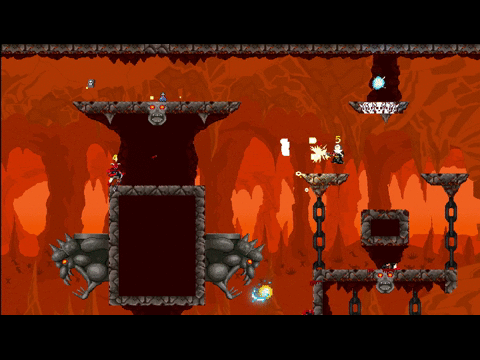
[Note: the game is much larger in size than it appears in the gifs here, of course.]
We initially took the supply for ammo and holy water for granted, since there were no indicators at the top. It really wasn’t long before we ran out of both, because we were wrecklessly firing at each other. In fact, both of us cried, “Oh shit, I’m out of ammo!” at exactly the same time. We both began scrambling for ammo, hoping to find it before the other did.
So that you’re not left entirely vulnerable to your opponents when you run out of ammo, Mindshaft introduced a bullet-deflecting shield and a melee charge – a sort of shield dash. The use of both depends on what situation you’re in. If you’re opponent fires at you at close range, you’re only option is to use the shield, because there isn’t enough time to charge and attack. So he’ll end up blasting his own head off instead, unless he’s quick enough to put up his shield as well. Mind you, you can’t move when you put up your shield.
Damage dealt by the melee charge depends on how long you hold down the button before you let go and the character dashes your opponent with his shield. There’s also a short cool down period after the successful use of the melee charge. But more importantly, if you miss, you’re character is left stunned for a moment, leaving him vulnerable to attack.
The absence of an ammo indicator and a health indicator was a conscious choice. Mindshaft wanted to keep the game free from UI elements as much as possible, so health is indicated by the flashing of your character upon being hit. When you run out of ammo, an exclamation mark begins flashing over your head. The developer knew that the lack of an ammo indicator would prompt players to manage their resources more closely and carefully. The number of bullet shells that fall from your gun are a good enough indicator, but the ensuing frenzy when someone fails to keep count is always great fun.
Each environment also has its own environmental hazards that players have to pay close attention to and react accordingly. For instance, the cemetery has spikes that are triggered when stepped upon. (Psst, watch out for the tiles with skulls engraved into them).
Don’t remain on top of a candle stand too long or else you’ll catch on fire. But the hazards are not so many as to overwhelm you, so don’t worry, Mindshaft has taken care to ensure each stage is balanced. Also, depending on how you look at it at the time, you can use some of these hazards to your advantage. There are hanging torture cages that you can shoot to bring down and crush the other player.
Environmental pieces that can be knocked over, such as the candle stand, can also be used for cover. In hell, you can send bullets chasing the other player through portals.
“TELEFRAG.”
The game also features tarot cards, that are random power-up and power-down cards. Power-down cards will affect the other player, not yourself. Power-up cards, however, will endow you with the enhanced ability. These are temporary. Think of them as status effects, lasting for no more than 15 seconds. For example, the Plague tarot card will bring the other player’s health down to 1 point, so that a single hit becomes sufficient to knock him out. The Power of Christ tarot card bestows the player with an unlimited supply of holy water. The Crown of thorns tarot card traps the other player in thorns for a short time, so that you can kill without having to worry about being killed. The Satan’s Spawn tarot card turns your shotgun into an instagib war machine.
There are plenty more tarot cards with intriguing effects, but it’s more exciting to discover these on your own.
You’ll notice that the characters don’t have their own individual set of stats to separate one from the other. That’s because you as a gamer will define your characters. Demons with Shotguns is a twitch shooter, and requires very short reaction times to gun down the other player, protect yourself from being blown to smithereens, while simultaneously avoiding the environmental hazards of the stage. The game’s replay value comes from the player’s determination and satisfaction at mastering these controls. It doesn’t just require a quick reaction time, it also needs quick reflexes, so there’s quite a bit of coordination going on here.
The rotation of the sky in the Metro environments is a really awesome touch. I also love how the screen quakes and the action goes into slow motion whenever you make a kill.
I wondered if the stages were large enough to accommodate more than two players without everything feeling too cramped, so we tried the game with my brother as third player. Our amusement was only multiplied as the gameplay intensified. My brother’s a skilled gamer, so even though it was his first time playing the game, he still managed to emerge victorious in every match while we sank in humiliation. One more match! we demanded.
I’m also absolutely enthralled by the camera movement in this game. Regardless of map size, the camera is able to ensure that all targets are in view at all times by focusing on their relative center. The camera is smart enough to measure the amount of distance it should zoom out when characters move farther away from each other, and the amount it should zoom in when character move closer to each other. These distinct zoom levels add to the overall excitement of the game. Our recorded gameplay was equally enjoyable to watch, partially because of this zoom factor.
In its most basic definition, Demons with Shotguns is a fast-paced local multiplayer 2D shooter, where Hell’s demons and Heaven’s fallen battle it out for each others’ souls.
Our experience playing Demons with Shotguns has been at once electrifying and charming. It calls forth shouts, great big smiles, laughter and large doses of healthy competition. It’s a game that makes you think and makes you think FAST. No doubt, this sort of training will come in real handy someday in real life. You don’t have to have an 80s heart to love this game. Demons with Shotguns continues the tradition of bringing people together and strengthening their bonds with memorable and sickeningly delightful gibbing experiences such as these.
By the way, Mindshaft is currently developing a single-player campaign! I had completely forgotten about its absence while playing the game, but this will be good for those separated from their friends by time and distance. I’m super curious to see what Mindshaft comes up with for this. If you have any suggestions, be sure to let them know. For more details, check out their Steam discussion board.
Demons with Shotguns is available on Steam in Early Access today, June 25, 2015.
To follow Mindshaft’s progress, you can visit their blog.
[review]

